The year is 1986. James Hetfield of Metallica is passed out in the band’s tour bus, head lolling, an empty bottle of Heineken in his left hand. Enter a roadie. He peels one scraggly blond hair from around the bottle, carries it to the man in the trenchcoat waiting in the shadows outside. “You’re sure it’s his?” The roadie nods, takes his cut, stalks away. The man puts the hair in a baggie. Cut to: a plane landing at Heathrow airport. Cut to: a lab, as echoes of the plane’s turbines fade on the soundtrack. A dozen petri dishes growing new Hetfields. Each embryo is implanted in a different womb, in a different family, in a different town in northern England: Manchester. Liverpool. Nottingham. And while the Hetfield we all know grows into the “monster” of the ‘90s, the new Hetfields grow up in obscurity—at least, to everyone but him. Their upbringings are closely monitored, carefully molded. A steady diet of old metal is piped into their cribs. Black Sabbath. Motörhead. Diamond Head. And of course, early Metallica. Their mothers taunt them with devil’s-horns-shaped rattles, spike their milk with Newcastle, goad them to scream until their vocal cords grow as calloused as their foster fathers’ hands. Flash forward to: 2004. Three of the Hetfields decide to form their own bands; the one planted in Huddersfield, under the name Drake, is perhaps the most promising. His band is a Metallica tribute called Metal Militia; the foster brother plays guitar—a perk from nurture—and is already quite the virtuoso. He encourages them from a distance, secretly exulting. For, as you have probably guessed, the hair-culprit has spent the better part of two decades consumed with bitterness about the sun setting on Britain’s metal empire, ever since the thrash and glam tsunamis crested over the British New Wave; and the Plan is nothing short of recapturing Britain’s World Domination of Heavy Metal. It isn’t long before Metal Militia begin writing their own material, and change their name to … Evile.
*
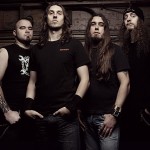 In case you haven’t heard, we’re in the middle—or maybe toward the end—of a thrash metal revival. Open your windows one night this summer—that’s right, turn off the AC—and you might hear strains of Slayer’s “At Dawn They Sleep” wafting across your city. You might be walking down the street when some kid drives by cranking, not Kanye West, not even Avenged Sevenfold, but old Exodus … or something that sounds like old Exodus, but is not a track you can remember ever hearing. And then one day you walk into your local record store, and the incredibly hip clerk, pierced everywhere but his elbows and young enough to be your son, is playing Death Angel’s The Ultraviolence (1987). That’s when you finally put two and two together, ask yourself: What the hell is going on?
In case you haven’t heard, we’re in the middle—or maybe toward the end—of a thrash metal revival. Open your windows one night this summer—that’s right, turn off the AC—and you might hear strains of Slayer’s “At Dawn They Sleep” wafting across your city. You might be walking down the street when some kid drives by cranking, not Kanye West, not even Avenged Sevenfold, but old Exodus … or something that sounds like old Exodus, but is not a track you can remember ever hearing. And then one day you walk into your local record store, and the incredibly hip clerk, pierced everywhere but his elbows and young enough to be your son, is playing Death Angel’s The Ultraviolence (1987). That’s when you finally put two and two together, ask yourself: What the hell is going on?
In 2007 the Village Voice did an interesting piece about a surge of unabashedly backwards-looking metal bands with names like Fueled by Fire, Violator, and Death Hunter. The Voice was less interested in the surge per se than in the idea that the majority of these bands were either Latino (Fueled by Fire) or from Latin America (Violator is from Brazil, Death Hunter from Colombia). Lest you think this is an isolated Latin American phenomenon, though, “thrash is back” (to quote Fueled by Fire) not just in the so-called periphery, but in the core as well. The website Rateyourmusic.com lists 150 neo-thrash bands worldwide—probably a fraction of the total—and the net seems to have exploded with fans’ lists of their top ten.
Nor is this metallic Great Awakening confined to the young and spry. Several bands that had been inactive since the mid-nineties, like Death Angel and Forbidden, have taken the opportunity to regroup with as many founding members as they could muster, record new albums, and pull the spiked leather bracelets down off the wall over the mantle to head out on tour. (Think of them as the old cowboys in The Wild Bunch, about to get mowed down.) And then the “big four” (Metallica, Slayer, Anthrax and Megadeth) are in the middle of a worldwide stadium-to-stadium tour, promoted by (gasp) Rolling Stone. (They’ll be at Yankee Stadium on the 14th of September, by the way—in case any of you Bronxites run into traffic and think you’re seeing an odd number of long-haired baseball fans.) As the term “big four” is not one I can remember hearing until last year, I’m guessing that this little marketing miracle is also attributable to the revival.
While the Voice article provides a nice rundown of the new Latin/o thrash scene, they are at a loss to explain why. Nor are the bands they interview much help. Defuse anger over the generally rotten state of Latin American society? Latin America has been rife with problems for a lot longer than five years; and although I’m perfectly happy to credit the continental spike against neoliberalism for the rise of neo-thrash—or conversely, to blame neo-thrash on the continental spike in evangelical Christianity—it doesn’t much help explain similar movements in the US and Europe. The recession? Wars in Iraq and Afghanistan? Price of cigarettes? Voice notwithstanding, Municipal Waste (US) and Gama Bomb (Ireland) seem to precede Fueled by Fire and Violator by a couple of years, and Evile (UK) released their first full-length LP the same year the Voice was touting neo-thrash as a largely Latin American phenomenon. (As long as we’re here, why are we always so anxious to pin the genesis of any form of loud, angry music on social dis-ease? Mightn’t it make more sense to talk about the thrash revival in terms of a cultural moment when the most successful popular music is composed of the cut-up and re-wedded samples of other people’s music?)
If there’s something ideologically satisfying about the idea of a Latin American neo-thrash movement, I guess it would be that the global “periphery” had come back to influence the “core.” And yet, whoever happened to come first, I don’t hear much in the way of influence going on here. Flamenco has a great name for its musical forms that were forged through colonization: “canciónes de ida y vuelta,” or round-trip songs. But the guajira and rumba grew from the cultural crossovers of the New World, and then were grafted back onto the music of the Old. In metal, the only analogy that comes to mind is Sepultura, who made a clear move in the ‘90s to think about the genre in terms of indigenous music and the legacies of colonization; one can already hear the berimbau in the main riff of “Refuse/Resist,” the first track on Chaos A.D. (1993), this two years before the band released their consciously-indigenous Roots. Whether this had any influence on later Latin American metal, or on metal in the US and Europe, I don’t know. But as far as the thrash revival goes, it sounds just like the name says. The master’s tools …
The alternating gales and tradewinds between the US and UK are another story, and probably strain even the most liberal application of the core-periphery metaphor to breaking. It was pretty much Kiss and some of the other heavy stadium rock acts, and maybe Alice Cooper, carrying the standard on this side of the Atlantic through the ‘70s. But we seem to have needed the Saxon invasion of the New Wave of British Heavy Metal and its consolidating effect on the genre to spur a real native American metal movement. When Metallica parodied “Run to the Hills” on the fadeout of their “Last Caress/Green Hell” Misfits cover on Garage Days Re-revisited (1987), it was more than an inside joke: they were striking at the heart of the beast, asserting the primacy of this punky new American style of metal. This is pretty ironic, given that the rest of that album and the previous Garage Days EP are largely dedicated to covering the unsung heroes of the British New Wave—covering them so well, in fact, that they rival Metallica’s best material; there is still probably a large contingent of the fan community who believe “Am I Evil?” and “Helpless” and “The Prince” are originals. Okay, maybe it was just a good-natured poke at Maiden’s popularity, as against the relative obscurity of bands like Diamond Head, Blitzkrieg and Budgie. Anyway, it’s worth remembering that the Garage Days Re-revisited EP appeared one year after Ozzy passed the torch, likening Metallica’s energy during their opening sets on the Ultimate Sin tour to the early days of Black Sabbath.
Rather than causes, maybe it’s more useful to talk about motives: why this desire to resuscitate a music that spiked and died a generation ago? According to the vocalist for Colombia’s Death Hunter, interviewed by the Voice, it is “to make the scene revive to the old days, to try and maintain the scene and strengthen it so that it doesn’t die with time.” Ah, nostalgia for a lost Eden, before the splinterings of the genre over the last two decades, when sound, scene and identity formed a coherent whole. (These bands even make fun of “net metal” fans who listen to the music online but don’t go to shows; the word “poseur” seems to be making a comeback, Fueled by Fire leading the charge.) It begs the question of whether such a scene ever existed, except in hindsight. But then revivals are always characterized by their emotional intensity about the thing revived, anger at the trespasses of the generation immediately prior, and a desire to “restore” something perceived as fallen: a religion, a society, a genre of music. Their zeal is only exacerbated by the sense of having missed the heyday, the time before the City on the Hill became a den of iniquity. That the thrash revival has been somewhat contentious among older fans is case in point: a certain distrust about those meddling kids raiding the tombs of their fathers’ fathers. Who knows to what sorts of travesties their misguided zeal might lead them?
In this light, the thrash revival appears not as an anomaly, but a necessity: a labor of reverence, a drama of devotion. At its core metal is still tribal, deeply beholden to begats, and as genealogically obsessed as the Mormon church. There are multiple ironies here—for one, that a genre that prizes itself so much on rebellion is so deeply bound by its own tradition—bound, in fact, by its very own tight-knit allegiance to a certain, specific rebellion. But it’s just these sorts of weirdnesses that led me to want to write something, however incomplete and overwrought, about this curious phenomenon called the thrash revival; and to focus on Evile for the very particular role they seem to be playing in it. How long can a genre revival last before it spirals into pure self-parody (assuming it neither started nor has already ended there) or bores itself to a dead end, even in a genre so enamored of its own past? How does a younger generation playing an older music both appease older fans and attract younger ones? And how much can a band pay tribute before they become just a tribute band?
*
Last fall a Jerseyite friend of mine suggested we go see Overkill at the Starland Ballroom in Sayreville (or “Slayerville,” as he calls it), New Jersey. Overkill are one of those genre stalwarts that have been going like a rabid Energizer bunny since the early ‘80s, as consistent and loyal to the scene as Slayer, if nowhere near as well-known or influential. Overkill are metal as blue-collar punk. Their early material managed to walk the crooked line between hardcore and classic sword-and-sorcery metal; there was even a bit of hair-metal hedonism thrown in for good measure. They capture everything that is lowbrow and in-your-face about working class N.J., epitomized in their 1987 re-casting of the punk anthem “We Don’t Care What You Say (Fuck You).” Not surprisingly, they played it for an encore, the crowd turning their devil’s horns into middle fingers to deliver the “New Jersey salute” (as wizened frontman Bobby Blitz termed it), a visual echo of the larger-than-life middle finger on the cover of the “Fuck You” EP. (Larger than life on vinyl, at least. What happened to the “actual size” head on the cover of Devo’s Are We Not Men? when it was shrunken for CD, and then became the “album artwork” on your phone?)
The “Slayerville” show was the last stop on the band’s silver anniversary tour. You could actually buy a T-shirt with a fluorescent green “Overkill bat” (a skull with bat wings, the band’s mascot, like Iron Maiden’s “Eddie”) hovering over a similarly day-glo outline of the great state of New Jersey. Seldom have music and cultural geography been more perfectly matched.
My Overkill roots go pretty deep. If you’re from North Jersey and listened to metal in the ‘80s, Overkill are at least your second cousins, like Jews and Italians. Original drummer “Rat Skates” and founding and continuing bassist D.D. Verni are from the town next to the one where I grew up. Friends of friends took lessons with Skates. Overkill were the first club show I ever saw, in 1987, on a double bill with Testament, at the now-defunct Satellite Lounge. That said, I was actually more eager to see the second band on the bill that night, Forbidden, one of several great acts that percolated up out of San Francisco Bay toward the end of the watershed, just long enough to put out a couple of records before going back to mowing lawns in Berkeley. They were maybe the most successful band of that era in uniting an operatic prog-metal with thrash’s speed and aggression. Anyway, I hadn’t seen either band since the mid ‘90s, so this show was as much a homecoming for me as for Overkill.
The third band on the bill that night (of five) was Evile. I hadn’t heard of them, and what with doors opening at 6 and first band going on at 7, I didn’t expect I’d get a chance to hear them. But then my friend insisted—and since this is the same friend who routinely ensconses himself at some nearby bar and drinks his way through half the headliner, never mind the opening acts, I eagerly consented. After all, I didn’t want to miss Forbidden; who knew but that it was my last opportunity—who knew how long thrash’s Indian summer would last?
I couldn’t have known at the time that this was the perfect context in which to see Evile: warming up for the sorts of bands they had built their career paying tribute to. Truth be told, I hadn’t been paying much attention to the whole thrash revival. I had read the Voice article when it came out, bookmarked the relevant MySpace pages; I was thrilled to see some of the old bands working again; I had watched and enjoyed YouTube clips my friends had sent me of Gama Bomb and Municipal Waste. But I walked into the Starland Ballroom not knowing that Evile was even a participant, let alone the revival’s “flagship.”
The 6 p.m. doors made sense. This was almost a matinee performance; the only thing missing were the picnic blankets. There were several guys my age there with their young sons. There were actually quite a few fans in the 16-to-24 age bracket, too, including one who works at the Mailboxes store my friend manages, and who has a band of his own. Here it was, metal as a rite of passage, as much in the audience as on-stage. It was as if, by incantation, by repetition, Evile could resurrect the past, “revive the scene,” as Death Hunter put it. Sabbracadrabra … and out of the smoke stumbles Forbidden, asking what the fuck year it is, and why their heads hurt so bad.
There were the obligatory expressions of excitement and homage of a young band getting to play with some of their heroes. But then they were so down to earth, and so gracious to be there, saying “cheers” in their very British way to a bunch of Jersey metalheads. I have to admit, I preferred that “cheers” to the New Jersey salute; but then I grew up on a different side of Jersey. And maybe just hearing that accent, in that context, pushed my Maiden-Priest nostalgia and blind allegiance buttons. Here were these young Brits, playing old American thrash metal with a “new” accent … as if metal had clicked its heels three times and found its way back to Oz, away from Kansas, and from Caracas. I enjoyed them so much that I forgot to ask why they weren’t doing to Metallica what Metallica had done to Maiden back in 1987.
*
Infected Nations (2009), Evile’s second album, maybe best illuminates some of the big questions facing the thrash revival as the subgenre crests its first half-decade. With 2007’s Enter the Grave, the band was credited with “carrying the genre’s whole ‘revival’ on their shoulders.” (That they were credited thus by British rock mag Kerrang! seems significant; perhaps my fictitious hair-culprit has a shade of truth about him.) Singer Matt Drake was likened (more than he deserved to be) to Slayer’s Tom Araya, and the music to early Metallica—surely helped along by the fact that Grave was produced by Metallica’s old engineer Flemming Rasmussen. But there were some notable differences between Grave and many of the revival’s other burnt offerings. The band logo and album cover art didn’t have that cartoonish, DIY style. Nor did the music have the same self-conscious over-the-topness of, say, Fueled by Fire, which screams pastiche. For many neo-thrashers, having a band seemed like an excuse to play dress-up Exodus, like some sort of postmodern glam-rockers. Could it be that these young Brits were taking themselves and the whole revival thing seriously?
It’s common wisdom that second albums are difficult, particularly after a much-lauded first one, and the “revival” thing adds a whole other degree of difficulty. Most reviews of Infected Nations suggest the band chose to move beyond Enter the Grave and begin to establish their own sound. This narrative of maturation is echoed in the bio on the band’s website—or probably the reverse is true—which, tellingly, does not mention that Evile began as a Metallica tribute. Fan reviews take pains to either praise or damn the changes; there seems to be no middle ground. Some go so far as to suggest that it would have been better for this great quasi-tribute band to keep tribute-ing than to evolve toward original mediocrity.
I think this misses the point. Evile is certainly changing; whether they are coming into their own sound is another story. And here is where the ironies come on fast and thick. The fact that the band has produced a more ambitious, progressive, slower second album is hailed as a step forward in their self-making. Until, that is, you consider that Metallica did just that, expanding their song lengths, and varying times, tempo, and dynamics through And Justice for All (1988). And not just Metallica; many thrash acts moved toward a proggier style as the ‘80s drew on, increasing song lengths, playing with time signatures, writing multi-movement suites, and slowing down that raging tempo. More than one fan review points to Justice as a viable analogy for Nations; others compare the change to Slayer’s between Reign in Blood and South of Heaven. Evile, then, seems to be recapitulating Metallica’s career, and the trajectory of the genre as a whole (as befits the look backwards: life is lived at the pace of time, but flashbacks can condense mercilessly). The price of being part of a genre revival appears to be that every attempt to “move forward” only binds one more closely to the genre revived. What’s maybe even more interesting to consider is whether the fan community, too, is recapitulating the reception of Metallica’s music, from exaltation to contention and feelings of betrayal.
It’s hard to get past playing riffspotting with Infected Nations. “Oh, that sounds like new Metallica/ middle-period Metallica/ old Metallica/ Slayer/ Testament/ Sepultura/ Queensryche/ etc.” Which is a bit of a shame, really, because it’s more fun to listen to than pick apart. Not that there aren’t weaknesses. The choruses in particular can be pretty drab, built around the title word/phrase groaned with either a half-step drop (Demoli-tion; Infected … Na-tions) or, in moments of near-inspiration, a full step up followed by a half-step drop (Devoid of … devoid of), buttressed by riot vocals (“Na-tions!”; “Now!”; “Thought!”; etc.) that sound like a packed football stadium. (I like a little less riot in my riot vocals; four or five guys shouting together is enough.) The funny thing is, it doesn’t take much to save a chorus—I know, I sound like one of those penny-for-the-homeless hawkers, but it’s true. “Plague to End All Plagues” is catchy because it monkey-wrenches the de rigueur half-step (Plague … to end) with a flat-fifth jump up (“ALL”), reinforcing the theme (for a regular plague, the regulation half-step in the chorus would be enough; but, goddammit, this is the plague to end ALL plagues). “Genocide” does it one better: again built on half-steps, the third line of the chorus kicks the half-step up a major third (“Visions of a future denied”), putting it squarely in the much-abused and -exalted Freygish scale. I’m actually being a little unfair with “Now Demolition,” which features a funky little key change and arpeggiated chords in the pre-chorus. In fact, were this not thrash metal, it would be totally unfair to suggest the vocalist need do anything but fart for the duration of the record.*
Where Nations excels, though, is in its sheer quantity of interesting riffage—derivative or no—and tight playing … and in the lead guitar work of Ol Drake, who turns out some of the most inspired, flamboyant and technically-sophisticated guitar solos since Dimebag went down in a hail of bullets. It makes me positively nostalgic for the days when a certain amount of self-indulgence was perceived as a virtue (he says, at word three thousand eight hundred of this post). For this reason—and contrary to what even some positive reviews of Nations suggest—the more interesting tracks here are the ones where the band give themselves space to stretch out and riff around: the aforementioned “Genocide”; “Metamorphosis”; and the 11-minute instrumental “Hundred Wrathful Deities.” Granted, “Deities” is not the masterpiece its length cries out for, and maybe because it sets the bar highest in terms of the ostensible move toward a new, more complex sound, it is the song most disparaged in reviews. But for the purpose of considering Nations in terms of the thrash revival, it’s the most remarkable track on the record: a sort of serial homage to Metallica’s three big instrumentals: “The Call of Ktulu” (1984), “Orion” (1986), and “To Live Is To Die” (1988) … with bits of Testament, Seasons-era Slayer, and even early Judas Priest thrown into the mix (see: riffspotting). A “Ktulu” opening gives way to two slow, heavy, “To Live”-like movements; the song then breaks into an “Orion”-like mid/up-tempo solo section, and then cycles back through variations on the three-movement introduction before concluding with an even stronger echo of “Ktulu”—not surprising, as this is the instrumental that closed Metallica’s own second album. And yet, I don’t want to give the impression that “Deities” is just a medley, or suffers from the rather typical metal-instrumental problem of sounding like a patchwork of unused riffs, even unused Metallica riffs. It actually has a structural integrity that many instrumentals lack. In fact, it’s more tightly welded together than “To Live Is To Die,” the Metallica instrumental to which it is probably closest in spirit, right down to the dull spots and the transcendent, full-on dirge in the middle, complete with harmonies that sound like they were laid on with a palette knife.
When it’s all over—”Deities” ends the album—the question nags: how can it be the masterpiece it wants to be when it’s still so indebted to the master? How can Evile restore the phallus and the purity of British metal when they’re as prone as Latin America to kowtowing to the US?
Maybe the better question is, Can it be a masterpiece of the revival without being indebted to the master? And maybe that’s what makes Infected Nations enjoyable, and sometimes downright good. It’s not that Evile sound most like themselves when they sound most like Metallica. It’s not even the earlier point, that by trying to grow out of being a tribute band they more firmly grow into one. It’s that the line between pastiche and inspiration is a fine one; and though Evile fall more than once, they also manage to perform some pretty amazing feats of balance. By flattering an older listener’s knowledge of the genre while managing, through sympathetic magic, to turn the stuff of rote tribute into something vital; and by refusing the security blanket of irony, and shooting so big as to try to gobble up the whole history of the subgenre, pace Metallica, in their sound. And why shouldn’t they? The City on the Hill was supposed to start the purifying fire, to be seen across the Atlantic. Even thrash metal was about restoring something, burning away the icons and brambles to find that mutable, fleeting essence underneath, maybe just called rock-n-roll.
A word about lyrics before concluding: In a genre that expends so much energy making monsters, and capitalizing on the monsters created by the more reactionary elements in our culture, it’s refreshing to hear a band that reminds us that the “demons” who commit monstrous evils “are only men”—that “they” are no different from “us” (“Genocide”). It’s particularly nice to hear this in a post-9/11 era, where a band like Testament, not unknown for occasionally spouting progressive-tilting lyrics back in the day (as was in fact intermittently true of many thrash bands), returned to the scene in 2008 with an apocalyptic “holy war” album. I don’t know what Evile’s politics are—where metal is concerned, most bands’ politics don’t bear much looking into; I’d as soon ask the Hell’s Angels to sign petitions for marriage equality. But is it too much to ask British neo-thrashers to re-import a bit of political sanity into the lyrics of post-9/11 metal? As long as they’re riffing on ‘80s thrash metal, they might as well channel that punk-inspired anger, or at minimum, apathy.
*
Evile’s third album is slated for release at the end of September. In interviews the band has suggested that they are seeking a middle ground between their first and second efforts—seeking, it seems, a compromise between “early” and “late” revival, between a much-lauded straight-ahead sound and a more contentious “progressive” one. I’m not sure how to take this. They’re a talented young band with, one hopes, a bright future. They weathered the sudden, tragic death of their bass player, Mike Alexander, in 2009. (Talk about recapitulating Metallica’s career, Jesus. At least Cliff Burton lasted three albums. Couldn’t Alexander tell his days were numbered?) It would be a shame if the very exuberance about an older style of metal that brought them into the spotlight were to become their Achilles’ heel. I’d really like to see at least a few of these neo-thrash bands chart their own course, wherever they might go, before their vessels are dashed to pieces on the rocks of a revival set to expire—history repeating or rhyming or whatever it does—before the next big evangelical apocalypse.
This all might be asking too much; the dead hand of the past may simply weigh too heavy, and the balancing acts of inspired tribute might be the best I can expect. In the meantime, I’ll keep listening, and raising my glass to them, as they did to me in Jersey.
* Matt Drake’s voice has been a focus of ire for several reviewers, who argue that he was a good Araya impersonator, but now that the band is writing slower, more nuanced material, he’s trying to “do something” with his voice … and it’s about as effective as a comb-over. Drake belts in the gruff midrange of thrash metal, a mix of Puppets-era Hetfield—even to the vocal harmonies—and Sepultura’s Max Cavalera, though without the dopey punch of the latter at his best. But I’ll take Drake any day over the “scream the verse, croon the chorus” (probably the best 6 words of music criticism the Voice ever wrote) emo-death crap that dominates the genre today.

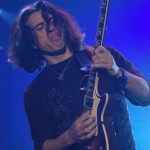
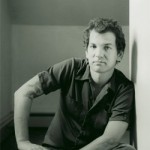
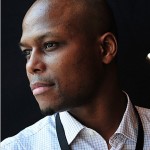
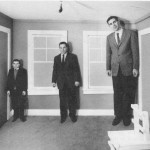
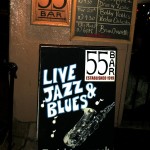
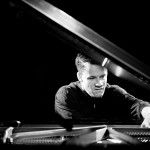
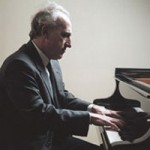
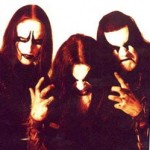 That I am not a true fan of Immortal, the seminal Norwegian black metal band (black as in Satanic, not African-American), but went to their recent show at the Brooklyn Masonic Temple anyway, is a sin for which I am still repenting. What follows is the text of my confession.
That I am not a true fan of Immortal, the seminal Norwegian black metal band (black as in Satanic, not African-American), but went to their recent show at the Brooklyn Masonic Temple anyway, is a sin for which I am still repenting. What follows is the text of my confession.
